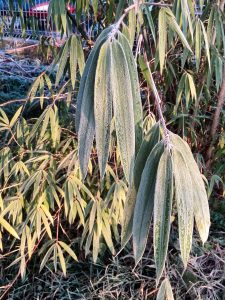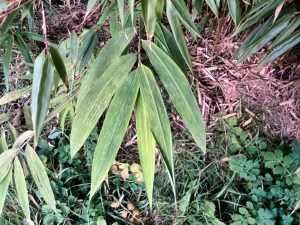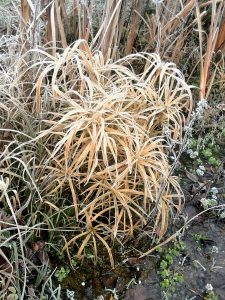Freeze damage

My plan was, to closely monitor weather data and try to spot emergence of cold induced damage on different (more or less) cold hardy bamboos. With gathered data, I’ll be able to determine cold hardiness of each individual bamboo, and detect possible ‘top kill’ conditions or (I sure hope not) conditions where bamboo completely dies. Bamboos are placed in different locations and can have their own micro-climate, but conditions are nearly identical. Small Chimonocalamus pallens seedling is planted under quite large Fargesia murielae, so it’s a bit more protected, but also much more tender because of it’s youth and extremely small size. Actually I will not be able to determine proper values for Chimonocalamus seedling, I will, however, be able to check its hardiness in it’s young seedling stage.

I will closely monitor temperatures and try to write down absolute low temperature (usually morning) and highest temperature. I will add wind conditions information, soil freeze / thaw conditions, information about snow cover accumulation, exposure to full sun, fog, rain, freezing rain… While closely checking weather conditions, I’ll also keep my eyes on all the plants, trying to notice any sign of stress or damage. When weather conditions won’t allow me to identify damage, for example in prolonged period of time with temperatures below freezing or rainy weather that will temporarily re-hydrate damaged leaves, making them look alive, I’ll try to determine the cause and extent of damage when it becomes evident.
I’ll keep all my recordings for further analysis and in try to create easily readable table or chart. Non-threatening days (with temperature above freezing) will be excluded, but will be mentioned as annotation in case of possible impact on plant’s condition later on when freeze damage occurs.
First freeze damage victims: Chimonocalamus pallens and Borinda fungosa seedlings
When temperature dropped and freeze the soil enough (-5°C/+2°C), Chimonocalamus pallens was the first of bamboos that started to show signs of leaf damage. Damage most likely started because of frozen soil and direct sun exposure. Leaves were exposed to full sun and roots were mostly shaded by F. murielae. With day temperature just above freezing, without wind and fully shaded, 1 cm of soil remained frozen. That was enough to damage the leaf cells. Leaves ended up slightly damaged and some of the youngest branches dried out during the first cold spell.
At the same time, the last shoots of Borinda fungosa also started showing some damage. The unbranched shoot is missing the top leaves, but culm still seems to be alive. Spring will tell if branches or buds got damaged. Autumn shoots that branched out recently had shown some damage and had lost a couple of fresh branches, but at least some of them might still be alive. Full extent of damage will also be visible in the spring.
DATA
Bamboo Name
Phyllostachys aureosulcata ‘Spectabilis’
Phyllostachys pubescens ‘Moso’ (3 year old seedling)
Phyllostachys aurea
Borinda (Fargesia) Fungosa (3 year old seedling)
Fargesia denudata ‘Lancaster 1’
Fargesia Murielae
Hibanobambusa tranquillans ‘Shiroshima’
Pseudosasa japonica ‘Tsutsumiana’
Chimonocalamus pallens (1 year old seedling)
Second cold wave.


Result of second cold wave
Phyllostachys aurea is holding well, much better than in 2012 when it got top killed. It does show some frost damage, but most of the culms took the cold surprisingly well. Even some of exposed leaves managed to recover, despite being totally dried out and wilted during the cold sunny weather.







